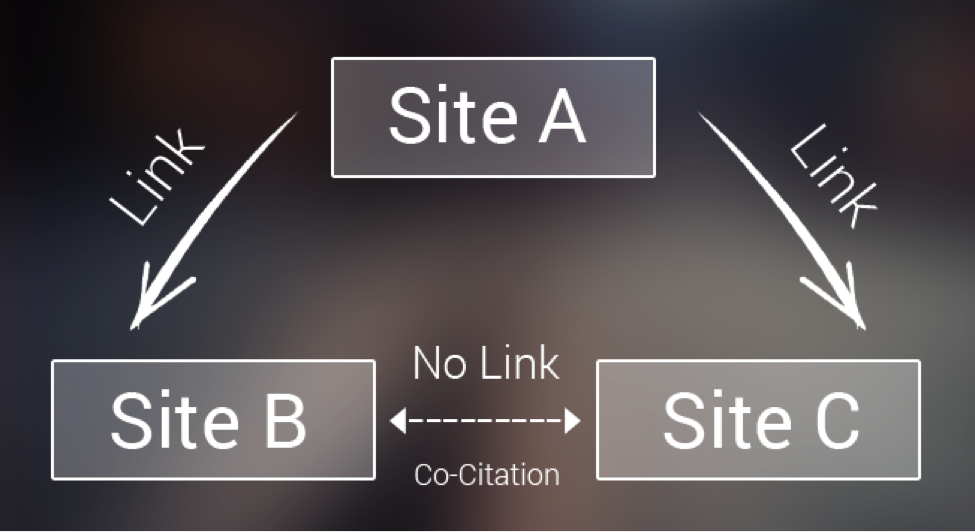Unraveling the mystery of co-citation: How these invisible connections can impact your SEO strategy and boost your website’s visibility.

Image courtesy of via DALL-E 3
Table of Contents
Introduction to Co-Citation
In this section, we will delve into the world of co-citation and why understanding it is essential. Let’s start by exploring the basics of what co-citation is and why it matters.
What is Co-Citation?
Co-citation is a fancy term that simply means when two different sources are cited together in another publication. Imagine you are writing a research paper and you mention two different books in the same sentence – that’s co-citation! It shows a connection between the two sources, even if they are not directly related to each other.
Why Does Co-Citation Matter?
Co-citation is crucial because it helps researchers find related information more easily. By looking at what sources are cited together, researchers can discover other relevant papers or studies on a particular topic. It’s like following a trail of breadcrumbs to more knowledge!
History of Co-Citation
Co-citation, a term that might sound complicated, actually has a simple origin story. Back in the day, researchers noticed that when two different papers were frequently cited together by other researchers, they were likely related in some way. This observation sparked the concept of co-citation, leading to further exploration and study.
Evolution Over Time
As time passed, researchers delved deeper into the world of co-citation. They discovered new methods to analyze and understand how different research papers were connected to each other through citations. What began as a simple observation grew into a valuable tool for organizing and exploring the vast sea of academic knowledge.
Understanding How Co-Citation Works
Co-citation is a fancy term that describes how two different sources, like websites or research papers, are mentioned together in a third source. Imagine you have two friends, Sarah and Alex. If someone talks about Sarah and Alex in the same sentence, they are co-cited. It’s like introducing them to each other indirectly!

Image courtesy of www.activemarketing.com via Google Images
Examples
Let’s say you’re searching for information about dogs on the internet. If two websites, WoofWoof.com and DoggyDelight.com, are mentioned together in a blog about popular pet websites, they are co-cited. This tells search engines that WoofWoof.com and DoggyDelight.com have something in common related to dogs, making them connected in the digital world.
Importance of Co-Citation in Research
Co-citation is like a map that helps researchers navigate the vast sea of information in the world of academia. Imagine you are looking for a specific book in a massive library. Co-citation acts as a guide, leading you to other books that are related to the one you are searching for. This way, researchers can discover valuable resources they might have otherwise missed, expanding their knowledge and understanding of a topic.
Building Knowledge Networks
Co-citation not only helps researchers find individual papers but also connects them to a web of knowledge. By analyzing which papers are frequently cited together, researchers can identify key concepts and researchers within a specific field. This interconnected network of knowledge allows scholars to build upon existing research, collaborate more effectively, and contribute to the advancement of their field.
Co-Citation and Search Engines
Search engines are like super-smart detectives on the internet. They have a tough job to do – finding the best and most relevant information for you when you type in a search. One way they do this is by looking at co-citation. When two different sources (websites, articles, or blogs) mention the same third source, the search engine thinks, “Hmm, these two are talking about the same thing. That must be important!” This helps the search engine determine which sources are connected and relevant to each other based on how often they are mentioned together.

Image courtesy of www.semrush.com via Google Images
Improving SEO
Now, let’s talk about SEO. It stands for Search Engine Optimization, which means making your website or content more visible and attractive to search engines. Understanding how co-citation works can actually help improve your SEO. By creating content that is connected to other trusted sources through co-citation, you can boost your website’s credibility in the eyes of search engines. This can help your content rank higher in search results, making it easier for people to find what you’ve written or created.
Real-Life Applications of Co-Citation
In library science, co-citation plays a vital role in organizing information and recommending books and papers to readers. Librarians use co-citation to identify related materials based on the links between different sources. This helps in creating curated lists of resources that are thematically connected, making it easier for patrons to explore and discover relevant content.
Academic Research
For scholars and researchers, co-citation is a powerful tool for navigating the vast landscape of academic literature. By analyzing the co-citation patterns of articles, researchers can identify key works in their field and establish connections between different studies. This process helps in building knowledge networks and understanding the broader context of their research topic. Co-citation enables academics to stay updated on current trends and developments within their field, fostering a deeper understanding and collaboration within the academic community.
Challenges in Co-Citation
One of the main challenges in co-citation studies is dealing with a massive amount of information. Imagine trying to find connections between thousands of research papers – it can quickly become overwhelming. Researchers often struggle to sift through this data to pinpoint the most relevant connections and information.
Image courtesy of www.wordtracker.com via Google Images
Keeping Data Accurate
Ensuring that co-citation data remains accurate and up-to-date poses another significant challenge. With new research being published constantly, maintaining the relevance and correctness of co-citation links can be a daunting task. Incorrect or outdated data can lead to skewed results and make it difficult for researchers to trust the connections they find.
The Future of Co-Citation
As we delve into the future of co-citation, it’s exciting to imagine the advancements that could revolutionize how we understand and utilize this important concept. Let’s explore some potential developments that may shape the field of co-citation in the coming years.
Technological Advancements
One key aspect of the future of co-citation lies in the technological advancements that could enhance our ability to analyze and leverage co-citation data. With the rapid growth of artificial intelligence and machine learning technologies, we may soon see sophisticated algorithms that can process vast amounts of co-citation data in ways that were previously unimaginable. These advancements could lead to more accurate and insightful analyses, enabling researchers to uncover new connections and patterns in academic literature.
More Applications
Looking ahead, the applications of co-citation may extend beyond traditional research and academia. As our understanding of co-citation deepens, we may find new and innovative ways to apply this concept in various fields. For instance, co-citation could be used in market research to identify trends and consumer preferences, or in healthcare to uncover connections between medical studies. The possibilities are endless, and the future of co-citation holds untapped potential for a wide range of industries and disciplines.
Conclusion
In conclusion, co-citation plays a crucial role in the world of research and academia by helping scholars connect with related work and build networks of knowledge. By understanding how co-citation works, researchers can efficiently find relevant papers and contribute to the advancement of their field. Moreover, co-citation has implications beyond the academic realm, as it influences search engine algorithms and can improve Search Engine Optimization (SEO).
Image courtesy of www.wordtracker.com via Google Images
Throughout this article, we’ve discussed the evolution of co-citation, its mechanics, importance in research, real-life applications, challenges, and potential future advancements. By grasping the concept of co-citation, individuals can navigate the vast landscape of information more effectively and contribute meaningfully to their areas of interest.
Remember, co-citation may seem complex at first, but with practice and understanding, anyone can harness its power to enhance their research and knowledge-sharing capabilities. So, next time you come across co-citation in your studies or online searches, you’ll know just how valuable it can be!
Want to turn these SEO insights into real results? Seorocket is an all-in-one AI SEO solution that uses the power of AI to analyze your competition and craft high-ranking content.
Seorocket offers a suite of powerful tools, including a Keyword Researcher to find the most profitable keywords, an AI Writer to generate unique and Google-friendly content, and an Automatic Publisher to schedule and publish your content directly to your website. Plus, you’ll get real-time performance tracking so you can see exactly what’s working and make adjustments as needed.
Stop just reading about SEO – take action with Seorocket and skyrocket your search rankings today. Sign up for a free trial and see the difference Seorocket can make for your website!
Frequently Asked Questions (FAQs)
What is an Example of Co-Citation?
An example of co-citation can be understood by imagining two research papers, Paper A and Paper B. If Paper C cites both Paper A and Paper B in their references, even though Paper A and Paper B are not directly related to each other, they are considered co-cited. This connection helps to establish a relationship between the topics discussed in Paper A and B.
How Does Co-Citation Help in Research?
Co-citation is beneficial for researchers in several ways. Firstly, it helps researchers discover related papers and sources that may not be obvious through traditional searches. By identifying co-cited papers, researchers can uncover valuable information and connections within their field of study. Secondly, co-citation aids in building knowledge networks by linking similar ideas and findings together, allowing researchers to explore a broader spectrum of information.
Can Co-Citation Influence SEO?
Co-citation can have a significant impact on Search Engine Optimization (SEO). When a website is co-cited with other reputable and relevant sources, search engines view it as authoritative and valuable. This can lead to improved search rankings and increased visibility online. Understanding co-citation and utilizing it effectively can enhance a website’s SEO strategy and help drive more traffic to the site.







